The center of the drone universe is in what at first glance appears to be the most unlikely of locations: among the bucolic farmlands and woodlands of Upstate NY – and especially Syracuse, NY. But this region has all the building blocks for leading the country in drone technologies.
It’s 1995 and the Future Looks Bleak
For more than a century, Upstate New York thrived, with manufacturing serving as a major engine of that prosperity. But by 1995, this began to change. The wave of plant closures and downsizing that started in the 1980s was accelerating into the 1990s. Industry giants like General Electric, General Motors, Carrier Corporation, Rockwell, and Revere—the “Who’s Who of Manufacturing”—were all exiting. Facilities that once employed thousands now stood empty, leaving a stark reminder of the region’s shifting economic landscape.
With the Cold War ending in 1991, a new wave of Base Realignment and Closure (BRAC) actions was announced. Griffiss Air Force Base in Rome, NY, was slated for shutdown, and the F-16s from the 174th Fighter Wing were set to be relocated from Syracuse's Hancock Field Air National Guard Base. Thousands more jobs disappeared, deepening the region’s economic crisis and fueling a widespread real estate downturn.
But it’s out of that cauldron of despair that the many heroes of this story emerge - a key part of Upstate NY’s future.
It All Starts with The Reaper (Drone)
With Upstate NY in something akin to an economic “near-death” state in the 1990s, it’s a bit ironic that the first drone in Upstate NY was the “Reaper” (full name: MQ9 Reaper Drone).
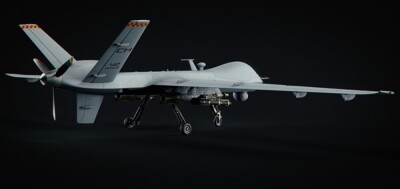
“We knew that there was no chance that we could save the F-16s from being moved from the 174th Fighter Wing. Those fighters were gone,” explains Marc Viggiano, formerly COO of Sensis, a major local defense contractor. “But we had to find a way to make sure that the 174th wasn’t going to be closed. And Jim Walsh led that charge.”
Jim Walsh, Sr. was the Congressman for New York’s 25th Congressional District from 1989 to 2009. And he saw a future where the 174th Fighter Wing’s F-16s were replaced with MQ9 Reaper Drones.
“Jim approached me and said, ‘I want you to perform a feasibility study to figure out how we could fly the Reaper out of Hancock Field Air National Guard Base.’” continues Marc Viggiano. “So, we landed a contract with the Air Force Research Lab in Dayton, Ohio and we got to work.”
But this wasn't going to be easy. Remember, it was the 1990s. “Drone” wasn’t even part of the common vocabulary, and the concept of flying an aircraft without a pilot on board was far from mainstream.
“To say that the FAA wasn’t thrilled about this would be the understatement of the 20th century,” explains Marc.
“Hank Krakowski, then the COO of the FAA, calls me down to his office in Washington, DC. He’s behind his desk and he is flanked to the left and right with his lieutenants and his legal staff. I’m sitting all alone in a chair in front of them.”
“And Hank says: ‘You’ll never fly drones out of my airports.’ All I could do was listen and think: ok, we need to find a way to convince these guys that this is the way of the future.”
It was a challenge that Marc recalls with relish. Because after years of effort from Jim Walsh, Marc, and a host of other heroes, Upstate NY won.
“I kept in touch with Hank after he retired and so when we finally got the Reapers, I couldn’t help but elbow him a bit. I sent him an article of the 174th taking delivery. It was great.”
The Drone Universe Expands…And Becomes Friendly
OK. So, we are now in the late 2000s, and Upstate NY has the MQ9 Reaper, but things are still pretty grim. The region was still losing lots of jobs and companies.
“You have to understand that, while all the big players like GE and Carrier had already left, we were still seeing smaller manufacturing facilities closing through the 2000s,” explains David Montanaro, a serial entrepreneur. “The region’s leadership tried anything they could to stem the hemorrhaging.”
But none of these efforts were truly effective. The pull of Southeast Asia and Mexico, with their dramatically lower costs, was a siren call that few manufacturers could resist. The real issue was that, at the time, nothing was stepping in to replace those lost industries. Yet.

David Montanaro had started a Voice Over IP venture in Syracuse, NY in the 2000s, but it was a fairly unusual thing for a commercial tech company to start in Upstate NY at that time.
That wasn’t true though in defense technology.
Many successful local defense companies were either already established by the 2000s or were starting. Sensis, SRC, ANDRO, and AIS to name a few. And these companies have been thought leaders and pioneers in drone technologies well before it was trendy to be.
SRC is one of those companies whose engineers and technologies have shaped the entire drone industry, but few really know how important a role SRC has played - and continues to play.
“You have to remember that in the 2000s we were still in the Iraq War and there were a lot of MQ9 Reapers and other drones coming back to the United States,” explains Andrew Carter, who was a lead engineer at the time for SRC but is now co-founder and CEO of ResilienX, a start-up focused on enabling drones ecosystems. “But it was very difficult to fly those drones because of all the restrictions imposed by the FAA.”
Tony Basile, then Commander of the 174th Fighter Wing during the transition from the F-16s to the MQ9 Reapers, explains: “We couldn’t fly around the [Hancock] airport at all, and the closest restricted airspace was far away. The FAA required us to have a chase aircraft to get to that restricted airspace.”
Syracuse Air Traffic Control led the effort to get rid of the chase aircraft and SRC won a contract to figure out this problem to develop the hardware and software to track drones and SRC truly delivered something great.
Andrew Carter continued, “the sensors we developed at SRC were so good that it was picking up everything - birds, planes - anything in the sky. Our first test installation of the system was in a desert region and so we spent many, many hours with binoculars scanning the sky to verify the contacts.”
This spawned yet another technology advancement. “Because the sensors were so powerful, we had to develop a classifier system to sort out and focus on the right contacts,” Andrew Carter explained.
ANDRO Computational Solutions is another “unsung hero” defense technology company based near Syracuse, NY. Its spectrum technologies are some of the most advanced in the world and form the backbone of many of the communications networks used across all branches of the military.
“We’ve been working on incorporating our spectrum technologies into many of the military’s drone platforms for years that includes Beyond 5G installation,” says Andy Drozd, founder and CEO of ANDRO. “And we’ve advanced the state of the art to do amazing things. We can perform spectrum sensing to find out who is out there and who is using the spectrum. Is it a friend? Or foe? We can facilitate spectrum access, enable spectrum sharing, or deny spectrum use to our foes in the air, on land, and sea.”
“But the new frontier is this,” Andy continues. “How do we radically reduce the cost of these drone platforms, so they are basically disposable? We need to be able to produce millions of these assets. So, at ANDRO, we are working on not only making our spectrum technologies the most advanced but also very inexpensive as part of the host platform integration process.”
“We are entering into a very dangerous period. Ukraine, Middle East, China’s build up. We must be prepared as to what will happen in the next few years. We must create communications and information systems that are unbeatable. This is essential for us to win.”
AIS views the world similarly. Founded in 2001 and also based near Syracuse, NY, AIS is at the forefront of what is called “Counter UAS” technologies.
“We’re in the business of taking down drones,” jokes Charles Green, co-founder and CEO of AIS. “It started with military and commercial clients asking us to test their drones for vulnerabilities. This work naturally evolved into counter-UAS opportunities, particularly in exploiting control systems. If you can get into those systems, you can take control of the drone—and ultimately, take it down.”
Charles also recognized that the culture within the defense technology ecosystem was highly competitive—and not in a healthy way. “Back then, regional defense companies would constantly undercut each other. It was a toxic environment, and I played my part in that," he admitted. "But as time went on, we realized that we had to change. Silicon Valley companies were succeeding by helping each other, by fostering partnerships. We needed that same spirit. Collaboration and partnerships are essential if we're going to tackle big challenges together."
Upstate NY Has Builder Talent
“Upstate NY has people who can actually build things,” explains Marc Viggiano.
It’s an interesting legacy of the massive manufacturing base the region once had. While many left when the manufacturers closed shop, there were many highly skilled workers who stayed. And they opened up small manufacturing shops, machine shops, fabrication shops, etc.
“These are people who have been doing things that many have considered passe for the last two decades. You know, actually building things,” says Dave Montanaro. “There are dozens and dozens of companies who can build anything you want. Right here.”
Steve Brinks, founder of Brinks Manufacturing in Hamilton, NY (home of Colgate University), is one of those people. His factory is what you think of when you think of a factory. It’s purpose-built for building things and so form follows function - it’s not pretty but it gets the job done. And it exudes a sense of grit and determination that was born from the fallout of all the manufacturing exodus of the 1980s and 1990s.
“Yes, a lot of my customers disappeared over that period because all the factories were closing in our region. We were able to not only survive but grow because we embraced technology. We started using CAD, email, and the internet, and we now get jobs from across the country.”
Think Variant, also headquartered near Syracuse, NY, has also thrived and overcome the same adversities to be a dominant force in advanced manufacturing. The Think Variant team holds over 90 patents and has been featured on CNN, Fox News, NBC, ABC, and Wired Magazine for their groundbreaking work in digital fabrication and manufacturing.
Scott Antonacci, CEO of Think Variant, explains: “We were founded in 2021, so we are a relatively new company, but Think Variant is powered by a team with over 50 years of combined experience in mechanical, robotic, and electrical engineering, software design, and design thinking.”
But this is just scratching the surface. There are dozens of other companies with similar pedigrees across the region.
The Dawn of GENIUS NY
So, with local defense technology companies and “builder talent” as a backbone, the “Upstate Revitalization Initiative” (URI) enters the story in the 2010s. It was a project spearheaded by New York state to try to jump-start the Upstate NY economy by making large, targeted investments. But unlike previous initiatives, the URI was structured as a competition. All the Upstate NY communities would submit proposals and there were to be three winners only - each getting $500 million.
“We called it ‘The Hunger Games,’” jokes Marc Viggiano. “Rob Simpson, CEO of Centerstate CEO, had a great idea to have our own competition within our region to select the proposal that would be submitted to the URI.”
“To be honest, I was on the team that focused on cybersecurity and not drones. But once we selected drones as our proposal-focus, all of the teams coalesced around it.” explained Marc Viggiano.
“Rob Simpson and the rest of the team on the URI had an impressive vision: to capitalize on what was at the time a nascent drone corridor that stretches from Rome, NY to Syracuse, NY,” explains Charles Green from AIS. “It was a massive effort, bridging across multiple economic development entities. I was honored and excited to participate in that vision.”
But this vision had deep roots, and it was something that took years of research and planning.
“We did not stumble into UAS,” explains Rob Simpson. “It was very intentional. We knew we had amazing capabilities in our area: manufacturing, IOT, micro-electronics capabilities - to name just a few. But these capabilities were being deployed in multiple verticals like medical, aerospace, radar systems and many others. We asked the question: how could we map these capabilities to a global market need? That’s where UAS and UTM came in. We decided to make a big bet on those.”
It was a big bet that paid off. The region won $500 million from the URI and a significant portion of this money would then go to fund a litany of projects aimed at making the region the center of the drone universe and one of them was a new business plan competition.
“We had been running a business plan competition with private funds for almost a decade,” continues Rob Simpson. “The biggest challenge of the region is that we weren’t starting companies fast enough to cover the businesses we were losing.”
“The existing business plan competition was $200k per year and we had success in building a pipeline of start-ups,” explains Kara Jones, Director of GENIUS NY. “But it was very general. There wasn’t an industry focus.”
The result was GENIUS NY, a business competition focused exclusively on UAS technologies. That in and of itself was revolutionary but the next step was even better. The grand prize is $1 million investment and that got a lot of people’s attention.
“From nearly the start we had companies apply and join from all over the world,” continues Kara.

The GENIUS Ecosystem
This is a well-worn pun but: there is a lot of genius behind the GENIUS NY program that goes far beyond the $1 million prize money. Sure, it was a great idea to have such a large prize because it gets a lot of attention but that’s not what makes GENIUS NY special. What is special is the ecosystem that’s been created - and that’s growing.
“We’re on our 8th cohort of start-ups now at the GENIUS NY program and we’ve done a lot of work to understand what is needed for our companies to be successful,” explains Kara Jones, Director of GENIUS NY. “We’ve grown our network of evaluators, mentors, and support companies. And there is a now an amazing ecosystem of drone companies that know drone technologies. Plus, they all help each other.”
“On the east coast, Syracuse is the only region that understands the drone industry,” explains Edwin Sanchez, CEO and co-founder of Votix, a company that made it to the finals for the 2023 GENIUS NY competition. “Syracuse is a Swan among Ducks,” jokes Edwin. “Let me explain. We now call Syracuse home, but we come from South Florida. When we started Votix, we pitched 100s of investors. The venture capitalists all wanted crypto and other fin tech. They don’t understand drones. But when I pitched Votix in Upstate NY, people got it. They understand drones and why Votix is a great company for the drone industry.”
But there is a lot more to the Syracuse region than just a deep understanding of drones and the drone industry. It’s something that Charles Green from AIS had stressed in his interview: this region values partnerships and helping each other out. There is a culture here that makes it a core goal to win as a group.
This was something that Edwin Sanchez, as an outsider to the area, immediately recognized when he and his team arrived here.
“The drone industry has suffered from lack of partnerships,” Edwin explains. “Everyone is trying to figure out their place and push their own technology stack. So, there is a strong tendency to stay away from partnerships. But it’s not like that here. GENIUS NY brings companies together to connect them to create a stronger fabric. We are going to win because we are working together.”
And that’s why companies like Votix stay in the region long after the competition has ended, and it is a sentiment that many other GENIUS NY companies shared.
Manny Cerniglia, CEO of FlyHound, a company that has developed a new, patented drone technology enabling rapid location of missing persons, agrees. “I have to admit that we initially became interested in GENIUS NY because of the prize money. Like all start-ups, we were looking for investment. But we were really blown away by the network effect and support of the GENIUS NY ecosystem. We weren’t expecting that.”
“The Tech Garden is filled with drone companies, so I can just go to the office next door and talk with a drone expert in person,” continues Manny. “But this area is now a strategic asset for us because of the presence of defense contractors who are experts in RF spectrum technologies and other wireless communication technology companies like JMA.”
Andrew Carter from ResilienX echoed similar thoughts. “It’s great to work with founders and executives. In most companies, much of the strategy work happens in a vacuum and no one wants to share what they are thinking. GENIUS NY breaks down those boundaries. I get to work with other GENIUS NY companies to talk about what they see in the market and what their strategies are, and we partner with a lot of the other GENIUS NY companies.”
It’s an environment that has gone beyond just business relationships. “Yes, you tend to work with people you like and trust, but that is taken to another level with GENIUS NY. The families of GENIUS NY companies know each other and hang out. We share AirBNBs. It’s just a great environment.”
“It is also an incredibly welcoming program. Even if you aren’t in the program!” explains Justin Call, CEO of Modovolo, a drone start-up company based near Syracuse, NY that hasn’t yet applied to the GENIUS NY program. “GENIUS NY has invited us to many of their events and we’ve gotten to know a lot of the GENIUS NY companies. We already see amazing partnership opportunities.”
Beyond GENIUS
GENIUS NY has brought in many drone-tech companies into the region but it’s no longer alone. It has been joined by other programs, one of which is the HUSTLE Defense Accelerator based nearby in Rome, NY and the other is LeMoyne Colllege’s drone program.
“When the Griffiss Air Force Base was shut down in the 1990s, the Air Force left a massive research lab (called the “Air Force Research Lab’s Information Directorate” or “AFRL”). The Griffiss Institute was founded in 2002 with a mission to transfer technology out of AFRL and into the commercial sector,” explains Michael Feng, Senior Director, Innovation and Partnerships.
“We launched HUSTLE in 2022 so we could bring in startups to leverage technology and our partnership with AFRL to do even more,” said Michael. “The results have been amazing. One of our companies, DroneCity, is building drones with 400 lbs. capacity and another is Archangel, a company that uses AI technology with drones.”
In 2018, Le Moyne launched an entrepreneurship program (complete with a minor) and that spurred the need for actual physical space to house it. The Keenan Center was born.
“The Keenan Center had everything for the budding entrepreneur, including an awesome maker space. We have all the latest 3D printer tech, CNC machines - we can fabricate anything,” explains Doug Hill, a Director at the Keenan Center. “But because I have been a long-time flight enthusiast - including being a pilot - I knew that we needed to get into drones.”
That was especially true after Doug Hill met Ken Stewart from NUAIR. “With Ken as advisor, we immediately saw we had to tie the Keenan Center with the drone ecosystem. It was becoming obvious to us that to support the GENIUS NY ecosystem we needed pilots. So NUAIR gave $600k to start the drone pilot initiative. And we also started the relationship with GENIUS NY. We work with the GENIUS NY teams, include students in startup scene.”
There were a lot of challenges though. “It took a lot to convince people that a professional drone program was needed. Many folks thought it was just going to Wal-Mart and buying a toy. We needed to get people to understand it is so much more than that. The typical drone pilot programs just stop at Part 107. It’s like giving a Ferrari and saying: learn to drive. Part 107 is just the learner’s permit. In order to be a successful drone pilot, you need to learn mission types. You need professional flight skills. And only 10% of being a drone pilot is actually flying. The rest is engineering and data analytics so you can actually deliver great results for customers.”
The Center of the Drone Universe
The drone universe is about so much more than just drones. It’s an entire ecosystem of innovation and collaboration. It’s the fabricators, machine shops, and skilled manufacturing talent. It’s the cutting-edge technologies drones carry to perform critical tasks. And it’s the systems integrators who seamlessly connect it all, transforming potential into action.
That systems integrator is NUAIR, a non-profit entity based in Syracuse, NY’s Hancock Airport that was founded in 2012 originally to become a test site.
“Congress directed the FAA to figure out and create the test sites because the big companies like Amazon, Wing (Google) were doing all of their drone testing outside of the US,” explained Tony Basile, COO of NUAIR and former Wing Commander of the 174th. “Congress wanted to stop that.”
So, Tony Basile took the lead on writing the proposal and the rest is (somewhat) history. By 2013, a test site was launched at nearby Griffiss with collaboration between Oneida County, AX Enterprize, and NUAIR. Since then, NUAIR has grown well beyond that original purpose, moving its operations to Syracuse International in August of 2023 and expanding its scope beyond UAS to include Advanced Air Mobility (AAM).
The unique advantages of NUAIR’s dual-use facility for both Civil and Department of Defense (DoD) Unmanned Aircraft Systems (UAS) operations offers specialized infrastructure and capabilities that set it apart from other locations, providing clients with a valuable opportunity to validate and verify their UAS hardware, software, or services. This is essential for businesses aiming to expand or refine their UAS technologies.
NUAIR provides Unmanned Traffic Management (UTM) in the region through a sophisticated suite of hardware and software, all of which is supplied by local companies or companies from the Genius NY program including SRC, ResilienX, Hidden Level, Aloft, Truweather. These capabilities mean that NUAIR can enable Beyond Visual Line of Sight (BVLOS) UAS operations in a way very few others can.
And NUAIR is another reason why GENIUS NY companies come and stay. As Eleanor Hanna, SVP of Marketing Communications explained, “One of the draws of this program is working with NUAIR. We have continued to invest in the program, in the industry and are still yielding results. NUAIR has also continued to evolve and last month opened its new space at the Syracuse airport.”
Ken Stewart echoes that sentiment. "Through NUAIR’s advanced capabilities and strategic partnership with GENIUS NY, we have developed an ecosystem that positions Central New York as a leading destination for innovation and industry growth—one that is attracting attention both across the U.S. and around the world."
It’s a boast that many leaders of the industry, state, and federal government agree with. In 2022 Congress enacted the “Advanced Air Mobility Coordination and Leadership Act” with the stated purpose to not only maintain but extend America’s predominant role in aerospace. As part of that act, a task force of twenty-two federal agencies was formed to understand current America’s capabilities and their last stop was Syracuse, NY to see the region, including NUAIR’s operations.
Let’s just say that before coming to Syracuse, the task force didn’t realize that it is the Center of the Drone Universe.
After visiting, one of the task force’s members stated: “We should have made Syracuse our first stop as we learned more here than anywhere else.”
About the Author: Justin Call is the CEO of Modovolo, a start-up that's launched the Lift, an endlessly configurable modular drone platform of Lift Pods and Utility Pods that are clicked together like Legos to build the right drone for every application, with hours of flight time, and at a price orders of magnitude less than anything on the market. You’ll want to see it for yourself.
About Modovolo: Modovolo is a start-up that's launched the Lift, an endlessly configurable modular drone platform of Lift Pods and Utility Pods that are clicked together like Legos to build the right drone for every application, with hours of flight time, and at a price orders of magnitude less than anything on the market. You’ll want to see it for yourself.
For inquiries, please contact: Justin Call, [email protected]

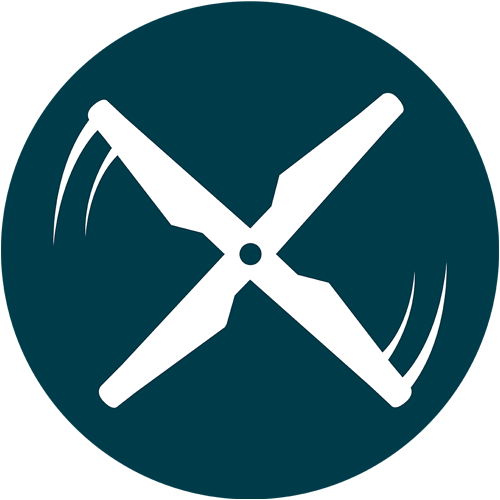
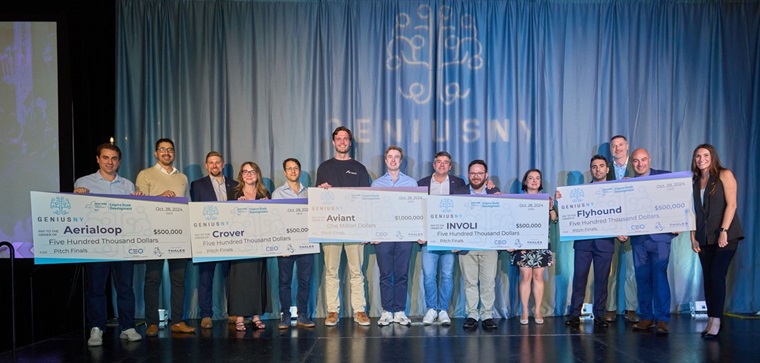

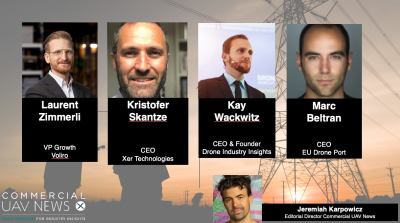
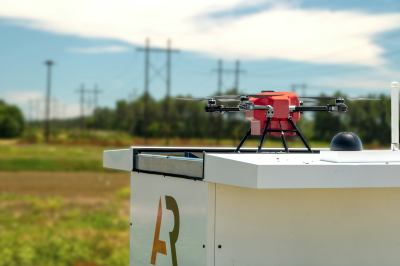
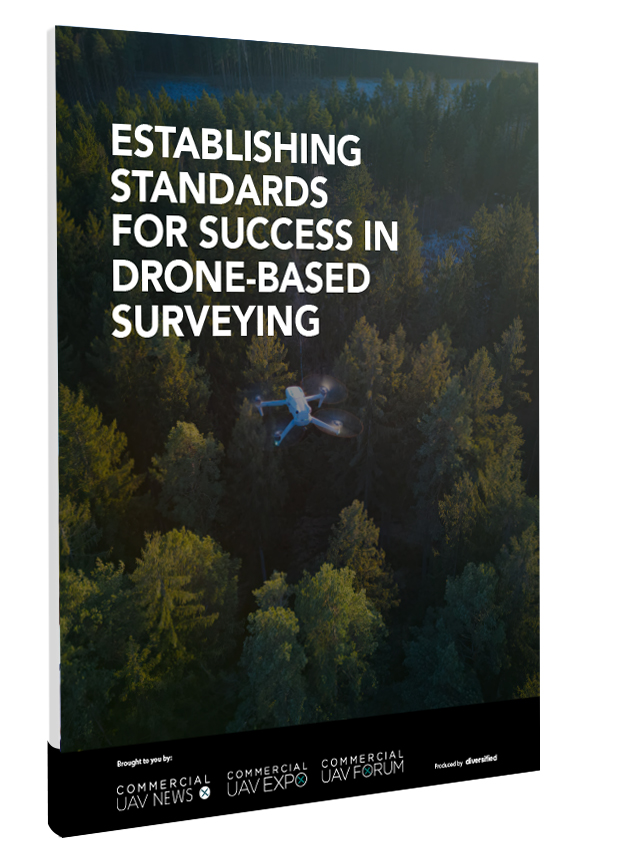









Comments